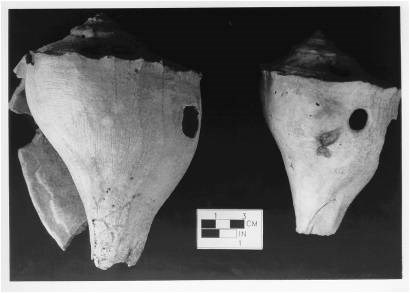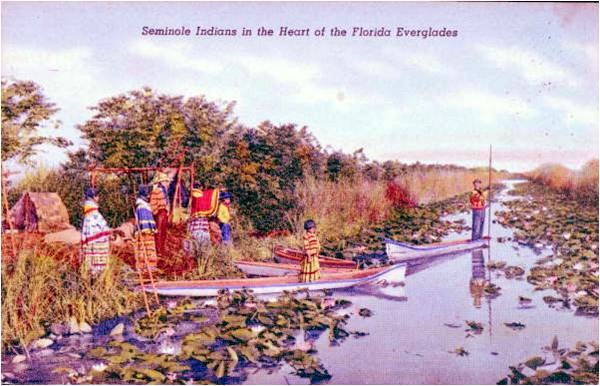
It is important to know that the Everglades has two very distinct seasons: dry season and wet season.
Dry season lasts from November to March and wet season lasts from April to November. Dry season is also the busy season because of the warm winters that attract the largest variety of wading birds and their predators. Wet season is buggy and many ranger programs are no longer offered. This is why it is important to check ahead of time the current schedule for ranger programs.
The Everglades spans across 1.5 million acres that stretches over the southern part of Florida, but it easy to access the park’s three main areas. The northern section of the park is accessible via Miami or Everglades City, the southern section is accessible through Homestead.
Visiting the Everglades allows you to explore a vast diversity of flora and fauna in different eco-systems: freshwater sloughs, marl prairies, tropical hammocks, pinelands, cypress, mangrove, coastal lowlands, marine, and estuarine.
There is a lot of area to discover at the Everglades, so it is vital to be prepared.
|
The Calusa The Calusa occupied the southwest region, while the Tequesta, Jega, and Ais tribes were located along the east coast of Southern Florida. However, Spanish accounts suggest that the Calusa tribe were the dominant tribe of the region and operated a complex Chiefdom that was comprised of a number of village communities all organized within a chiefly hierarchy. Archaeologists consider this type of complex organization rare for non-agrarian societies. 
NPS Calusa village communities were concentrated along the south west coast. They depended on fishing, as well as systematic foraging for sustenance. Living among the coastal mangroves of the Florida Gulf Coast, the Calusa utilized the abundance of shells around them to create their built environment. Archaeologists have identified shell mounds, which were piles of empty and discarded shells that had been used as tools after their contents were consumed. The Calusa also built shell formations. These built forms, called “shell works,” were large scale architecture which used ridges, mounds, platforms, and courtyards within their town plans. Their exact social uses are unknown, but it is likely that they were used to divide gathering places from sacred spaces and provide barriers from mosquitoes or ocean tides. When the Spanish encountered the Calusa upon their arrival in the 16th century, they noted their shell works, intricate ceremonial art, and complex political system. Despite their strong organization and power in the region, the Calusa disappeared not long after their interactions with Spanish explorers. By the time the English gained control of Florida in 1763, the Tequesta and Calusa tribes had been severely decimated by incoming European diseases. According to early settlers, the remaining native people retreated deeper into the Everglades, while others migrated to Cuba to begin new settlements there in the late 1700s. 
The Seminole and Miccosukee After the American Revolution the Spanish claimed ownership of Florida from Great Britain in 1783. This was soon called into question by Andrew Jackson, who invaded Florida in 1818. In 1821, the United States was able to take ownership of Florida and Jackson’s exploits to seize all of Florida continued. In 1835 the second Seminole War began and resulted in a seven year struggle to remove the Seminole population from Florida. The Seminole, living in small bands, were able to elude the incoming troops by retreating further into the mosquito ridden wilderness that left the inexperienced disoriented and frustrated. By the end of the seven years the United States relented on their earlier mission, however the Seminole population had been largely relocated. Troubled relations between the Seminole and settlers had not tempered though, and the third Seminole War began in 1855 with a Seminole attack on Fort Myers. The war ended with the signing of a treaty in which the Seminole relinquished over 2 million acres of land in 1856. The Seminole that remained continued cattle ranching and farming in relative peace. Learn more about the history of the Seminoles here. Last updated: April 14, 2015 |
Traditional Seminole cultural, religious, and recreational activities, as well as commercial endeavors, are dependent on a healthy Everglades ecosystem. In fact, the Tribe's identity is so closely linked to the land that Tribal members believe that if the land dies, so will the Tribe. The Seminoles saw the Everglades in decline and recognized that they had to mitigate the impacts of man on this natural system. Seminole environmental projects are designed to protect the land and water systems within the Reservation while ensuring a sustainable economic and cultural future for the Tribe.
Everglades Restoration Initiative
The Seminole Everglades Restoration Initiative is an ambitious, multi-year project that will have a significant impact on the quality and quantity of water flowing off of the Big Cypress Reservation and into the Florida Everglades. It is designed to mitigate the impacts of development on the environment; more specifically, to improve water quality, to increase water storage capacity, and to enhance hydroperiods. This $65 million program has received consistent support from the state and federal task forces working to improve the South Florida environment. The entire project has been included in the Governor's Commission for a Sustainable South Florida's report on the projects needed for Everglades restoration.
Restoration Benefits
The Future
The challenge of maintaining the unique Seminole culture while operating in the mainstream economy is the priority for today's Seminole Tribe of Florida. The descendants of Osceola, Jumper, Micanopy, and Sam Jones have come a long way since the bullets stopped flying a century ago. These days, the battleground is often a courtroom, where the Seminole Tribe has proved a vigorous defender of its sovereignty.
The proud, "unconquered" Seminole Tribal community remains, as always, a valuable legacy of Florida's rich and diverse heritage and a national leader among American Indian tribes striving for self-reliance.
How can you help Native Americans and support Tribal law?
SUPPORT THE NATIVE AMERICAN RIGHTS FUND
"With credibility built over 50 years of service, NARF has become a respected consultant to policy makers and others engaged in drafting legislation. As a consensus builder, NARF works with religious, civil rights, and other Native American organizations to shape the laws that will help assure the civil and religious rights of all Native Americans. NARF attorneys, many of whom are tribal citizens, use their understanding of Indian legal issues to assist tribes in negotiating with individuals, companies, and governmental agencies." SOURCE: NARF ABOUT US
SUPPORT THE NATIONAL AMERICAN INDIAN COURT JUDGES ASSOCIATION
"NAICJA is a national association comprised of tribal justice personnel & others devoted to supporting and strengthening tribal justice systems through education, information sharing, and advocacy. NAICJA is a non-profit corporation established in 1969 as a corporation in the state of Delaware following the enactment of the federal Indian Civil Rights Act of 1968. The Act required tribes to follow certain requirements similar to those in the Bill of Rights in the U.S. Constitution. Tribal courts are the forums where those rights are enforced. NAICJA’s early goal was to provide education to tribal judges so that they could conduct proceedings in compliance with ICRA.
As a national representative membership organization, NAICJA ‘s mission is to strengthen and enhance tribal justice systems."
There are two federally recognized Indian tribes in Florida today.

1
Miccosukee Tribe of Indians:
Tamiami Station, PO Box 440021
Miami, FL 33144
http://www.miccosukeetribe.com/
2, 3, 4, 5, 6
Seminole Tribe of Florida:
6300 Stirling Road
Hollywood, FL 33024
http://www.seminoletribe.com/
The Seminole Nation has five different reservations in Florida, but all of them are governed by the same tribe. Big Cypress Indian Reservation is the largest, but the Hollywood Reservation is where the seat of the Seminole government is located.